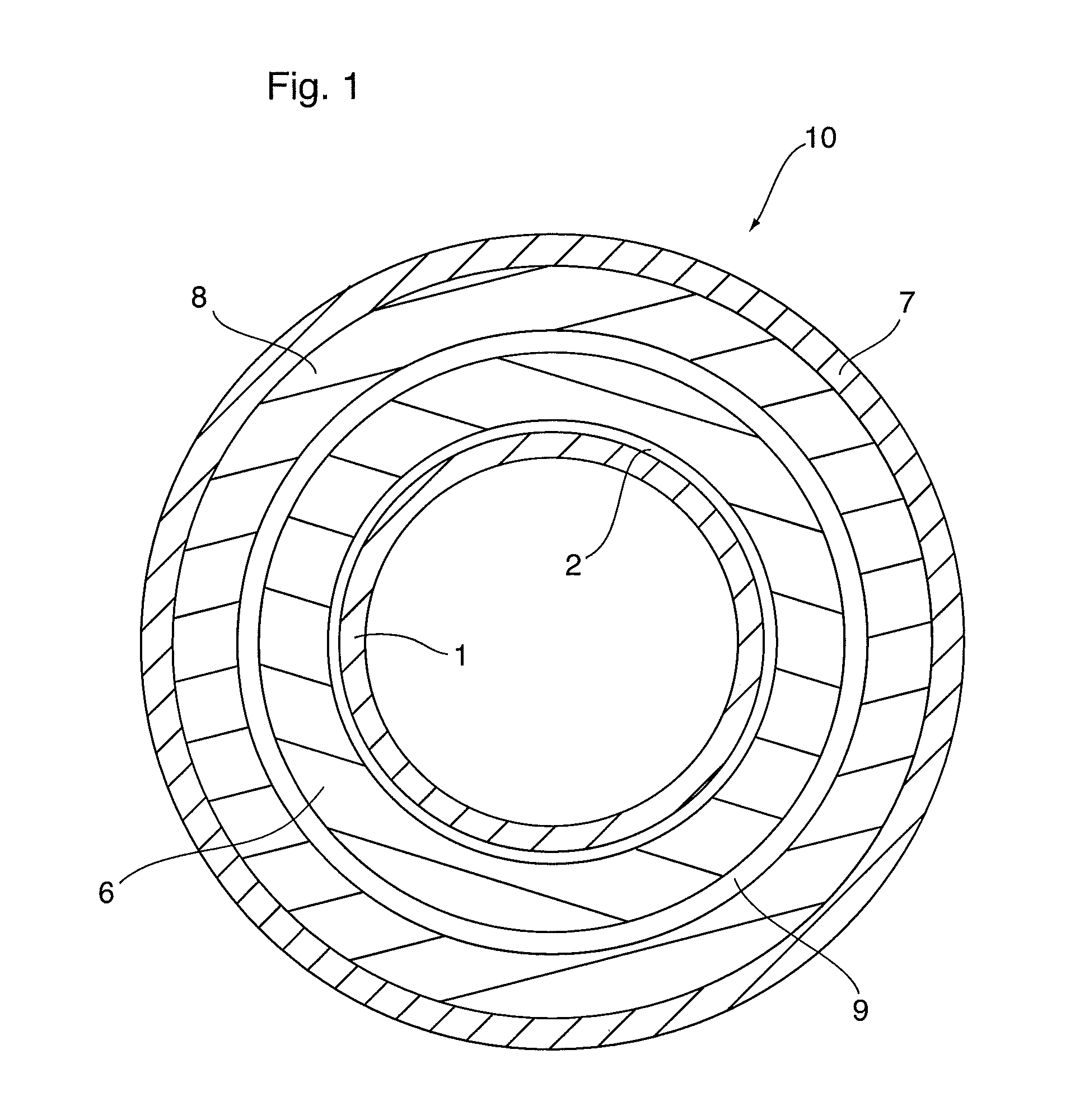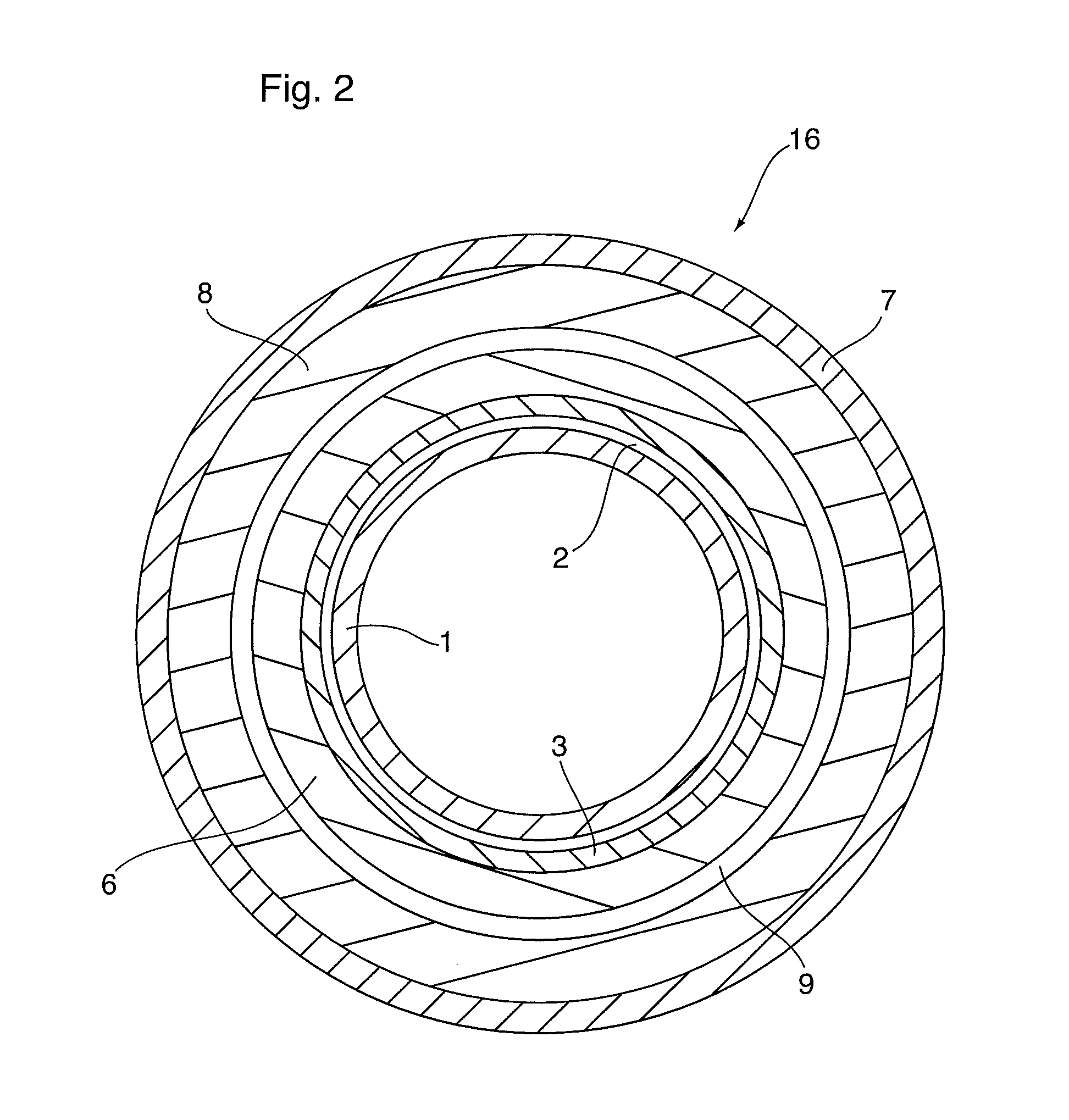High temperature resistant polysulfone insulation for pipe
a polysulfone and pipe technology, applied in the field of polymer compositions, can solve the problems of reducing or losing production, affecting the value of assets, and requiring the replacement of pipeline sections or entire systems with corresponding loss of asset valu
- Summary
- Abstract
- Description
- Claims
- Application Information
AI Technical Summary
Benefits of technology
Problems solved by technology
Method used
Image
Examples
example 1
Thermal Conductivity Testing
[0169]Thermal conductivity testing was performed on two identical samples of polyphenylsulfone (Samples 1 and 2) at temperatures of 30° C., 90° C., 120° C., 150° C. and 190° C. The thermal conductivity of each sample was tested in accordance with ASTM Standard C518-04: “Standard Test Method for Steady-State Thermal Transmission Properties by Means of the Heat Flow Meter Apparatus”. Samples 1 and 2 each had a thickness of 5.96 mm and diameter of 57.73 mm. The results of the thermal conductivity testing of Example 1 are shown in Table 2 below, and in FIG. 4.
example 2
Thermal Conductivity Testing
[0170]Thermal conductivity testing was performed on two identical samples of polyphenylsulfone (Samples 3 and 4) at temperatures of 30° C., 90° C., 120° C., 150° C. and 200° C. Samples 1 to 4 all had the same composition. The results of the thermal conductivity testing of Example 2 are shown in Table 2 below, and in FIG. 5.
TABLE 2Thermal Conductivity (W / m · K)Temperature (° C.)Sample 1Sample 2Samples 3, 4300.2330.2120.246900.2510.2570.2651200.2580.2630.2741500.2640.2670.2801900.2410.254NA200NANA0.297
example 3
Long-Term Heat Flow Testing
[0171]Long-term heat flow testing at 205° C. was conducted in order to test the effectiveness and the stability of the insulation system. The test samples consisted of three layers, a steel plate to simulate a pipe; a first thermal insulation layer comprised of polyphenylsulfone, and a second thermal insulation layer comprised of a high impact polystyrene. The steel plate was heated to simulate hot fluid flowing through a pipe; and the outer surface of the second thermal insulation layer was in contact with cold water to simulate a subsea environment. The results of the testing are shown in FIG. 6, in which:[0172]1 represents the temperature of the water in contact with the outer surface of the second thermal insulation layer;[0173]2 represents the temperature of the outer surface of the second thermal insulation layer;[0174]3 represents the Q value, representing heat flow through the two insulation layers; and[0175]4 represents the temperature of the stee...
PUM
| Property | Measurement | Unit |
|---|---|---|
| Temperature | aaaaa | aaaaa |
| Temperature | aaaaa | aaaaa |
| Temperature | aaaaa | aaaaa |
Abstract
Description
Claims
Application Information
 Login to View More
Login to View More - R&D
- Intellectual Property
- Life Sciences
- Materials
- Tech Scout
- Unparalleled Data Quality
- Higher Quality Content
- 60% Fewer Hallucinations
Browse by: Latest US Patents, China's latest patents, Technical Efficacy Thesaurus, Application Domain, Technology Topic, Popular Technical Reports.
© 2025 PatSnap. All rights reserved.Legal|Privacy policy|Modern Slavery Act Transparency Statement|Sitemap|About US| Contact US: help@patsnap.com



